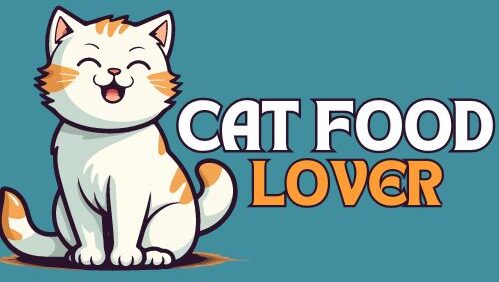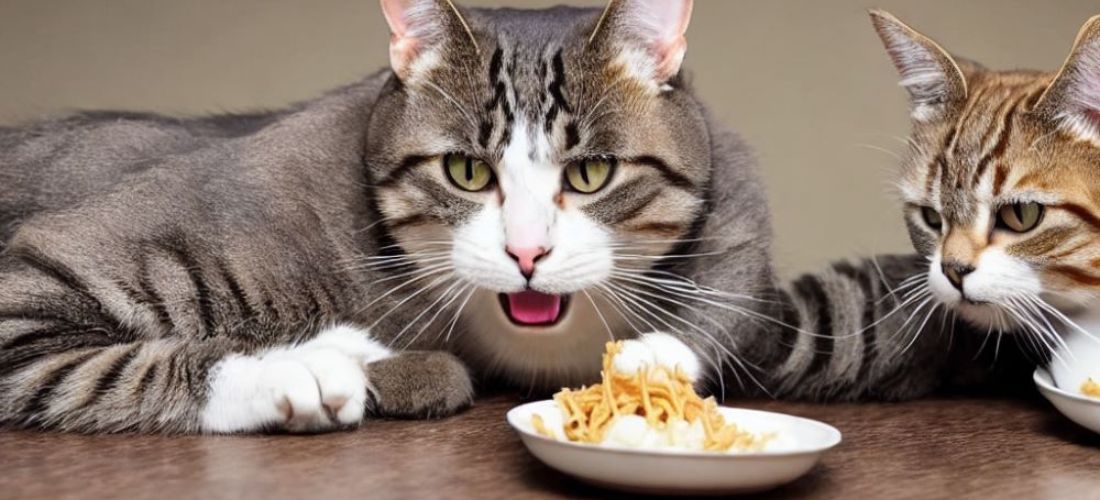Introducing the quest for the ultimate soft dry cat food, a pursuit that amalgamates the desires of feline aficionados for both palatability and convenience. In the world of cat nutrition, the debate between wet and dry food has long persisted, each option boasting its own set of advantages and drawbacks. However, for discerning pet owners seeking a middle ground, the concept of soft dry cat food emerges as a tantalizing solution.
This hybrid variety aims to reconcile the texture preferences of cats with the practicality often associated with dry kibble. Combining the moistness and flavor appeal of wet food with the shelf-stability and dental benefits of dry, soft dry cat food presents itself as a promising compromise. Yet, amidst the plethora of options flooding the market, discerning the truly superior soft dry cat food becomes a challenging task.
Factors such as ingredient quality, nutritional balance, texture consistency, and individual cat preferences all play pivotal roles in determining the ideal choice. Delving into this inquiry necessitates a comprehensive exploration of available brands, formulations, and consumer reviews to uncover the elusive champion in the realm of feline culinary delights
Do cats need soft cat food?
Hydration
One of the primary benefits of soft cat food, such as wet or canned food, is its high moisture content. Cats are notoriously poor drinkers, and many don’t consume enough water, which can lead to dehydration and urinary tract issues. Wet cat food can help supplement a cat’s water intake, contributing to better hydration and urinary tract health.
Palatability:
Some cats simply prefer the taste and texture of soft cat food over dry kibble. This can be particularly true for older cats with dental issues or cats with sensitive teeth or gums. Soft food may be easier for them to chew and digest, making mealtime more enjoyable.
Digestibility:
Wet cat food tends to be more easily digestible than dry kibble, which can be beneficial for cats with gastrointestinal issues or those prone to digestive upset. The higher moisture content and softer texture of wet food can help promote smoother digestion and may be gentler on the stomach.
Weight Management:
In some cases, soft cat food can be helpful for weight management purposes. Since wet food tends to have fewer carbohydrates and more protein compared to dry food, it may help cats feel fuller with fewer calories, making it easier to maintain a healthy weight.
Medical Needs:
Cats with certain medical conditions, such as kidney disease or dental problems, may benefit from a diet consisting primarily of soft cat food. For example, cats with kidney issues may require a diet with lower phosphorus content, which is more commonly found in wet food. Similarly, cats recovering from dental surgery or with severe dental disease may find it easier to eat soft food.
While soft cat food offers several advantages, it’s essential to note that a balanced diet is key to a cat’s overall health. Whether you choose to feed your cat soft food, dry food, or a combination of both, it’s crucial to select high-quality cat food that meets their nutritional needs and to consult with your veterinarian for personalized dietary recommendations.
Key Takeaways
- Soft dry cat food offers a softer texture compared to traditional dry kibble, making it ideal for cats with dental issues or finicky tastes.
- Acme’s Tender Bites and WildPaws’ Natural Delights are top contenders, offering premium ingredients and irresistible flavors.
- For cats with sensitive stomachs, Purrfect Health’s Sensitive Stomach Formula provides a gentle yet nutritious option.
What is the best soft dry cat food?
There are premium cat foods that offer a compromise between softness and dryness, such as semi-moist cat foods or certain freeze-dried options. Here are a few considerations when looking for high-quality cat food:
Ingredients:
Look for cat foods with high-quality, animal-based protein sources as the primary ingredients. Avoid products with fillers, artificial additives, or by-products.
Nutritional Balance:
Ensure the cat food meets the nutritional needs of your cat, including essential vitamins, minerals, and amino acids. Look for products formulated to meet AAFCO (Association of American Feed Control Officials) standards.
Texture:
Consider the texture your cat prefers. While most cats enjoy the taste and texture of wet food, some may prefer softer dry kibble or semi-moist options. Pay attention to your cat’s preferences and any dental issues they may have.
Moisture Content:
Opt for cat foods with higher moisture content, as this can help promote hydration and urinary tract health in cats who don’t drink much water. Wet or semi-moist foods typically have higher moisture levels than traditional dry kibble.
Brand Reputation:
Choose cat food brands with a reputation for producing high-quality, nutritious products. Look for brands that conduct feeding trials, employ veterinary nutritionists, and have rigorous quality control measures in place.
Consult Your Veterinarian:
Your veterinarian can provide personalized recommendations based on your cat’s age, health status, dietary needs, and preferences. They can also help you navigate the wide array of cat food options available on the market.
While there may not be a specific “best” soft dry cat food, by considering these factors and choosing a high-quality cat food that meets your cat’s nutritional needs and preferences, you can ensure your feline companion receives a balanced and nourishing diet.
What is the best soft food for senior cat?
When selecting the best soft food for a senior cat, several factors should be considered to ensure their nutritional needs are met while also accommodating any age-related health issues they may have. Here are some key considerations:
High-Quality Protein:
Senior cats require higher levels of easily digestible protein to support muscle maintenance and overall health. Look for soft cat foods with real meat as the primary ingredient, such as chicken, turkey, or fish.
Lower Caloric Density:
Older cats may be less active and have slower metabolisms, making them prone to weight gain. Choose soft cat foods that are lower in calories to help prevent obesity and maintain a healthy weight. However, ensure the food still provides adequate nutrition despite being lower in calories.
Joint Health Support:
Senior cats are more susceptible to arthritis and joint pain. Select soft cat foods that contain ingredients such as glucosamine and chondroitin sulfate, which support joint health and mobility.
Digestive Health:
As cats age, their digestive systems may become less efficient. Opt for soft cat foods that are easy to digest and gentle on the stomach, reducing the likelihood of digestive upset or issues such as constipation.
Dental Health:
Many senior cats experience dental problems such as gum disease or tooth loss, making it difficult for them to chew hard kibble. Soft cat foods with a palatable texture that require minimal chewing can help ensure they receive adequate nutrition without discomfort.
Added Nutritional Supplements:
Consider soft cat foods that contain added vitamins, minerals, and antioxidants specifically formulated for senior cats. These nutrients can support immune function, cognitive health, and overall vitality in older felines.
Veterinary Guidance:
Consult with your veterinarian to determine the best soft food options for your senior cat based on their individual health needs, dietary preferences, and any pre-existing medical conditions they may have.
Some popular brands that offer soft cat food options tailored for senior cats include Hill’s Science Diet Senior Wet Cat Food, Royal Canin Aging 12+ Thin Slices in Gravy, and Purina Pro Plan Prime Plus Adult 7+ Chicken & Beef Entree in Gravy. However, always remember to choose a high-quality soft cat food that meets your senior cat’s specific nutritional requirements and preferences.
Benefits of soft dry cat food?
Soft dry cat food, while not as common as traditional wet or dry cat food, can offer some benefits for both cats and their owners. Here are a few potential advantages of soft dry cat food:
Texture Variety:
Soft dry cat food provides a unique texture that can appeal to cats who enjoy both soft and crunchy textures. It offers a compromise between traditional wet food and dry kibble, catering to cats with varying preferences.
Dental Health:
Some soft dry cat foods are formulated with a texture that promotes dental health by helping to reduce tartar and plaque buildup on the teeth. The gentle abrasion from the food’s texture can help keep teeth clean and gums healthy, potentially reducing the risk of dental issues such as gum disease and tooth decay.
Convenience:
Soft dry cat food often comes in convenient bite-sized pieces or pellets, making it easy to measure and feed. It typically has a longer shelf life than traditional wet food and doesn’t require refrigeration once opened, offering convenience for pet owners who prefer the ease of storing and serving dry food.
Nutritional Value:
High-quality soft dry cat foods are formulated to provide balanced nutrition, containing essential vitamins, minerals, and amino acids necessary for a cat’s health and well-being. They often include real meat or protein sources as the primary ingredients, ensuring cats receive the protein they need for muscle maintenance and energy.
Reduced Mess:
Unlike wet cat food, soft dry cat food doesn’t contain excess moisture that can lead to spills, stains, or unpleasant odors. This can make feeding and cleanup easier for pet owners, especially those with multiple cats or busy lifestyles.
Hydration:
While soft dry cat food isn’t as moist as wet food, it still contains some water content, which can contribute to a cat’s overall hydration. This can be beneficial for cats who don’t drink enough water or those who prefer a slightly moist food texture.
Conclusion
The concept of ” soft dry cat food” may not be as widespread as traditional wet or dry options, it represents a compelling middle ground for feline nutrition. Soft dry cat food offers a unique texture that can appeal to cats with varied preferences, providing a compromise between the softness of wet food and the convenience of dry kibble. With potential benefits such as dental health support, convenience for pet owners, and balanced nutrition, it presents itself as a viable option for many cat households.
However, it’s crucial to note that the best soft dry cat food will vary depending on individual cat needs.Preferences, and health considerations. Careful consideration of factors such as ingredient quality, texture, nutritional balance, and veterinary guidance is essential.When selecting the optimal diet for your feline companion.
Ultimately, whether it’s traditional wet food, dry kibble, or soft dry cat food. Prioritizing high-quality ingredients, balanced nutrition, and your cat’s well-being is paramount. By making informed choices and consulting with veterinary professionals. Cat owners can ensure that their beloved pets receive the nourishment they need to thrive throughout their lives.
FAQs
Is soft or dry food better for cats?
Both soft and dry food can be suitable for cats; choice depends on individual preferences, health needs, and veterinary recommendations.
Can I feed my cat 3 times a day?
Yes, feeding your cat three times a day can be appropriate, ensuring meals are balanced and meet their nutritional needs.
Can I make dry cat food soft?
You can moisten dry cat food with water or broth to soften it, but avoid soaking excessively to prevent spoilage.

